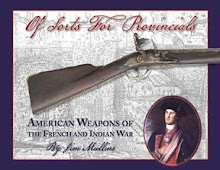In 1761, the second year of the Cherokee campaign, Virginia forces plodded on; recently promoted Provincial commander Colonel Adam Stephen wrote from his post at the Long Island of the Holston river (in modern Kingsport, TN):
"I have erected a square redoubt of hewed logs on a piece of very strong ground on the banks of the river, with four bastions, the exterior 120 feet. I have done this from the just sense I have of the great advantage of it will be to have a post maintained here, either by the King or Colony. It is the only advanced between Pittsburg & Ft. Prince George, commands a large river navigable to the Mississippi & not only awes the Cherokees, but several other numerous tribes of Indians."
The fort was at the end of a line of advance posts and camps that Virginia provincial forces had recently erected, departing in stages from the forts in the Roanoke valley, stretching towards Fort Loudon in Tennessee (Byrd papers, Volume 2 note on page 727)
Bryan's to Dunkard Bottom [Pulaski County, Virginia] 40 miles
thence to Sayer's Mill [Reedy Creek at Ft Chiswell-Modern Wytheville] 24
Thence to Davis' 26
thence to Stahlnaker's 25 [Marion Va/Chillhowie/ Fort Attakullakulla]
thence to the halfway spring 25
thence to the Big Island 25 [Kingsport TN Fort Robinson]
Detail from a 1766 map showing the Holston river in relation to Fort Chiswell, Wytheville Virginia
(labelled "Bird's camp in 1760"), Fort Loudon in Tennessee and Fort Prince George in South Carolina.
"A map of the Indian nations in the southern department, 1766". William L. Clements Library, University of Michigan Library Digital Collections
Portrait of Speaker John Robinson (1704-1766) Colonial Williamsburg Foundation
This fort was named for Speaker of the House of Burgesses and Colony Treasurer, John Robinson. Robinson was Colonel John Chiswell's son in law, and had invested with Chiswell and recently resigned Virginia Provincial commander, Colonel William Byrd in the lead mines named for Chiswell in modern Austinville, Virginia.
Colonel Adam Stephen's "General Return of the troops at Great Island", dated November 28, 1761, showed 744 men of the Virginia Regiment, 408 North Carolina Provincials (including 52 Tuscarora Indians) for a total of 1,152 men present at that point (Fauquier papers page 654).
Christoph von Graffenried (1661-1743), John Lawson (1674-1711),
and an enslaved man as prisoners of the Tuscarora, 1711. This drawing depicts the moments before Lawson's torture and execution at the hands of the Tuscarora in 1711.
Returns from December, 1761 show that military stores there contained: 6 Barrells of powder, 4 Casks of Cartridges, 1 Cask of Flints, 300 Weight of Barr Lead, 100 [pounds] Buck Shott, 2 Casks of Musket Balls, 20 Quires of Cartridge paper... 15,000 Weight Flower, 3,000 Weight Beef (Fauquier papers page 653).
On November 19, 1761, a 400 man delegation led by Kanagatucko, the "nominal king of the Cherokees,"arrived and sued for peace with Colonel Stephen. Kanagatucko asked for an
officer to accompany them back to the Cherokee towns. Virginia Ensign Henry Timberlake left Fort Robinson to join the Cherokee as a diplomatic hostage on November 28th, 1761. He would later return and escort Cherokee emissaries to London.
The fort appears to have been abandoned in 1762 as Virginia forces withdrew at the conclusion of the campaign, but it was later reoccupied as "Fort Patrick Henry" in 1776.




_and_John_Lawson_(1674-1711)_as_prisoners_of_the_Tuscarora,_1711.jpg)